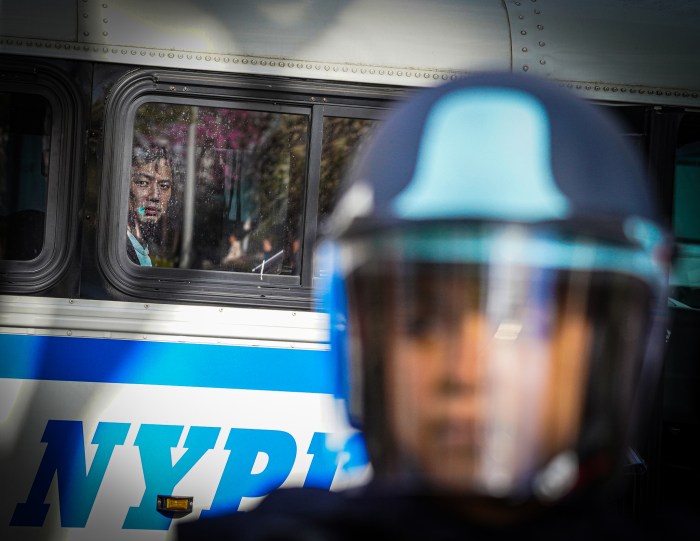By Michael Morton
“I think it's a shame,” said Whidden, visiting the cemetery, one of the city's oldest, for the first time. “It doesn't have to be 'Better Homes and Gardens,' but it should be navigable.”For years the caretakers of the 4-1/2-acre site, located in a quiet part of York College that is not owned by the university, have struggled to find the time and money to maintain the grounds and an adjacent chapel, built in 1857. As a result, much of the cemetery, established in 1668, remains inaccessible despite periodic cleanups and the chapel stays padlocked apart from an occasional visit.”When I walked into the chapel for the first time, I wept,” said Cate Ludlam, president of the Prospect Cemetery Association. “It's not right for a cemetery to be left that way.”Many of Ludlam's ancestors lie buried at the site, and one of her forebearers paid for the construction of the chapel, known as The Three Sisters, to honor his three daughters after they died young. Ludlam was introduced to the cemetery in 1988, when a woman attempting to rescue some abandoned puppies stumbled across a trash-strewn graveyard. Moved by the sight, the woman tracked down relatives from the names on the headstones, eventually reaching Ludlam. She became president of the association a year later and has made it her mission to fix up the cemetery and chapel.Thanks to help recently from two organizations and a state grant, the grounds may soon be ready to accept a steady stream of visitors. The chapel building already has been shored up, the cemetery mapped and less overgrown sections of the grounds cleaned up. In addition, a city-funded project to complete a fence around the cemetery is underway, as is an effort by the Greater Jamaica Development Corp., a non-profit dedicated to economic growth, to improve the side of the site that borders 159th Street. After more work, the street, currently closed to vehicles and foot traffic from downtown Jamaica, will be reopened in July as a pedestrian-only thoroughfare between Archer Avenue and Liberty Avenue.Questions remain, however, about a planned renovation of the chapel that will cost at least $300,000 and be funded by a state grant awarded to Greater Jamaica and the New York Landmarks Conservancy, a non-profit that helps preserve city historical sites. When the bidding process for the work opened last week to contractors, the costs exceeded the groups' estimates, and they are now seeking ways to lower expenses and find more funding.The effort could delay the project, previously expected to be completed this fall or next spring. However, when fully renovated, the chapel could be rented out for church services and other events. The income could then be used to maintain the grounds and perhaps tackle those sections of the cemetery that remain impenetrable and unexplored. “I think when we clean up, we will find a stone for him,” Ludlam said of Whidden's great-grandfather.In addition to Whidden's and Ludlam's relatives, the cemetery holds the remains of founding Queens families including the Van Wycks, Sutphins and Brinkerhoffs, as well as Dutch and British settlers and soldiers from the Revolutionary War and Civil War. At least one slave is also buried there, placed next to her master, according to city historians. In the cemetery's early years, relatives of the deceased took care of the grounds. But as people moved away from Jamaica, the burden fell on volunteer caretakers, even after the site was declared a city historic landmark in 1977. With the association overwhelmed by the task and working with limited funds, the cemetery and chapel gradually fell into disrepair. The sandstone grave markers are flaking and illegible, while the marble headstones are crystallizing and blurry. Vandals have knocked over many of the stones, while some of the graves have been excavated by thieves, possibly to extract bones for ritual ceremonies used in African-based spiritual practices, Ludlam said. “I don't understand that,” she said of the destruction.The deterioration has occurred just a short distance from where students walk along the York College campus and commuters pass by on Long Island Rail Road trains, making the cemetery a piece of history hidden in plain view. But thanks to volunteer clean-up efforts and media interest in recent years, the grounds have lately drawn the attention of city and state officials as well as private donors. If all goes according to plan, pedestrians will soon stroll by the cemetery and a congregation could fill the chapel.”It's a wonderful time,” Ludlam said.Reach reporter Michael Morton by e-mail at news@timesledger.com or by phone at 718-229-0300, Ext. 154.































